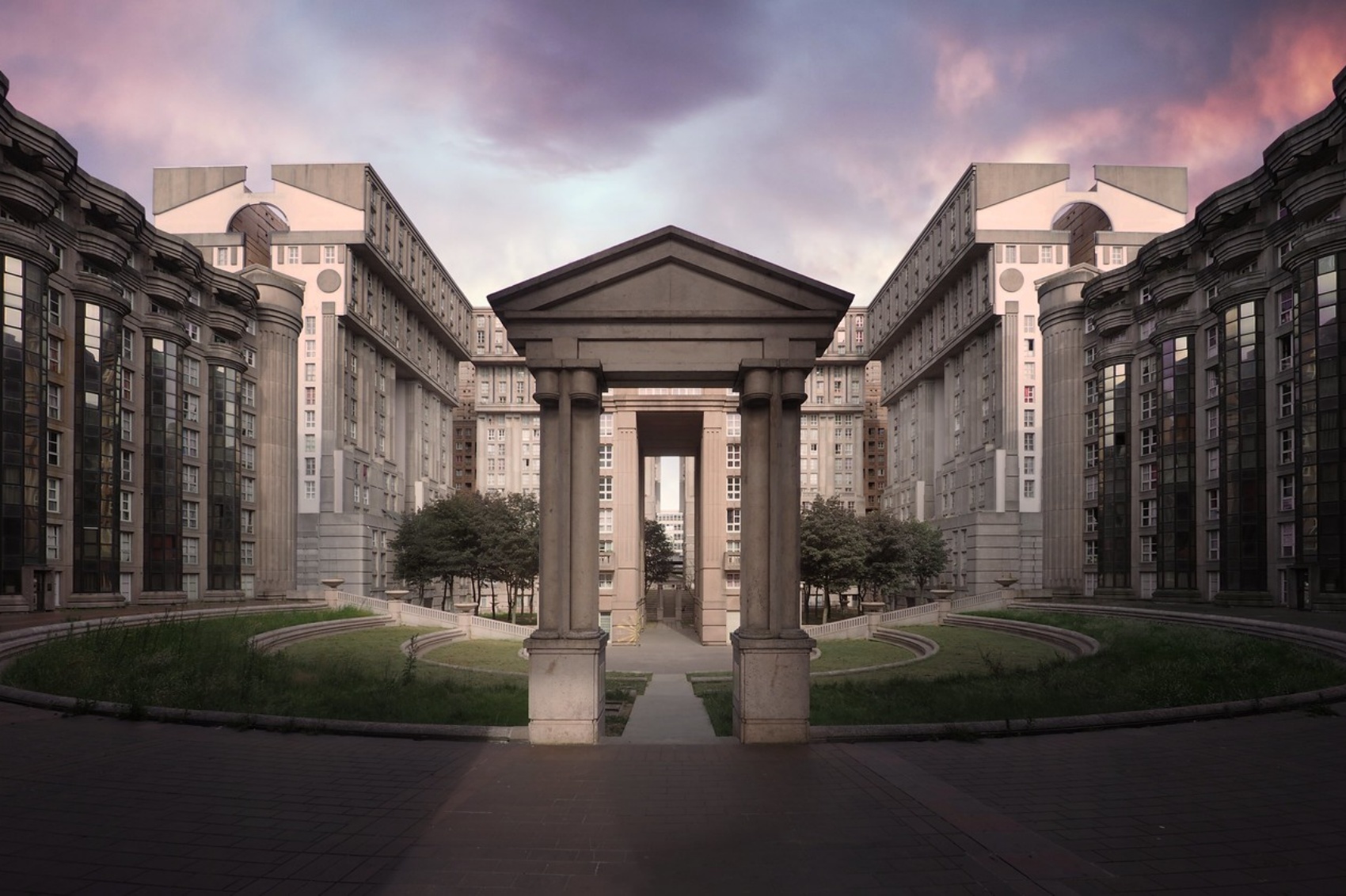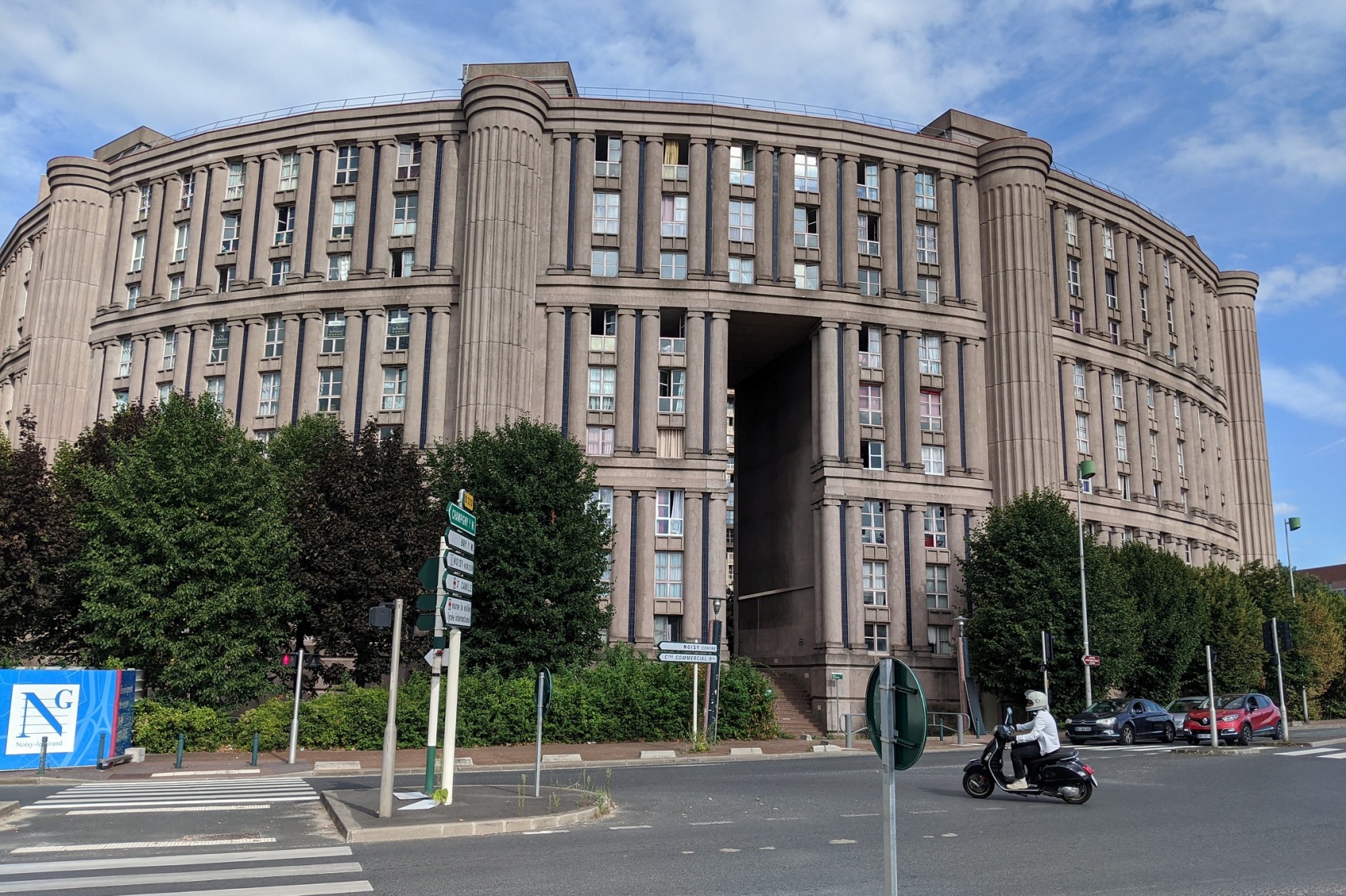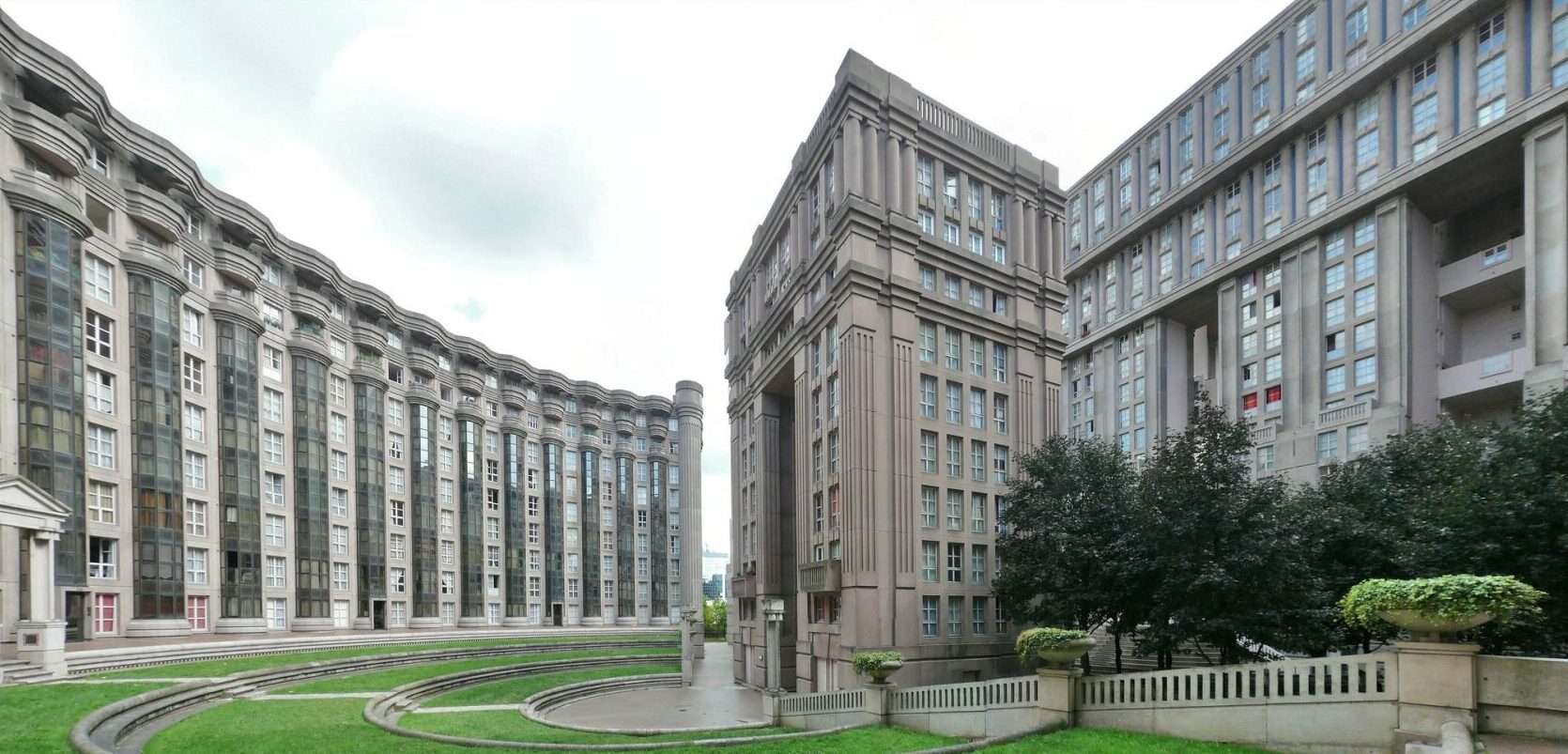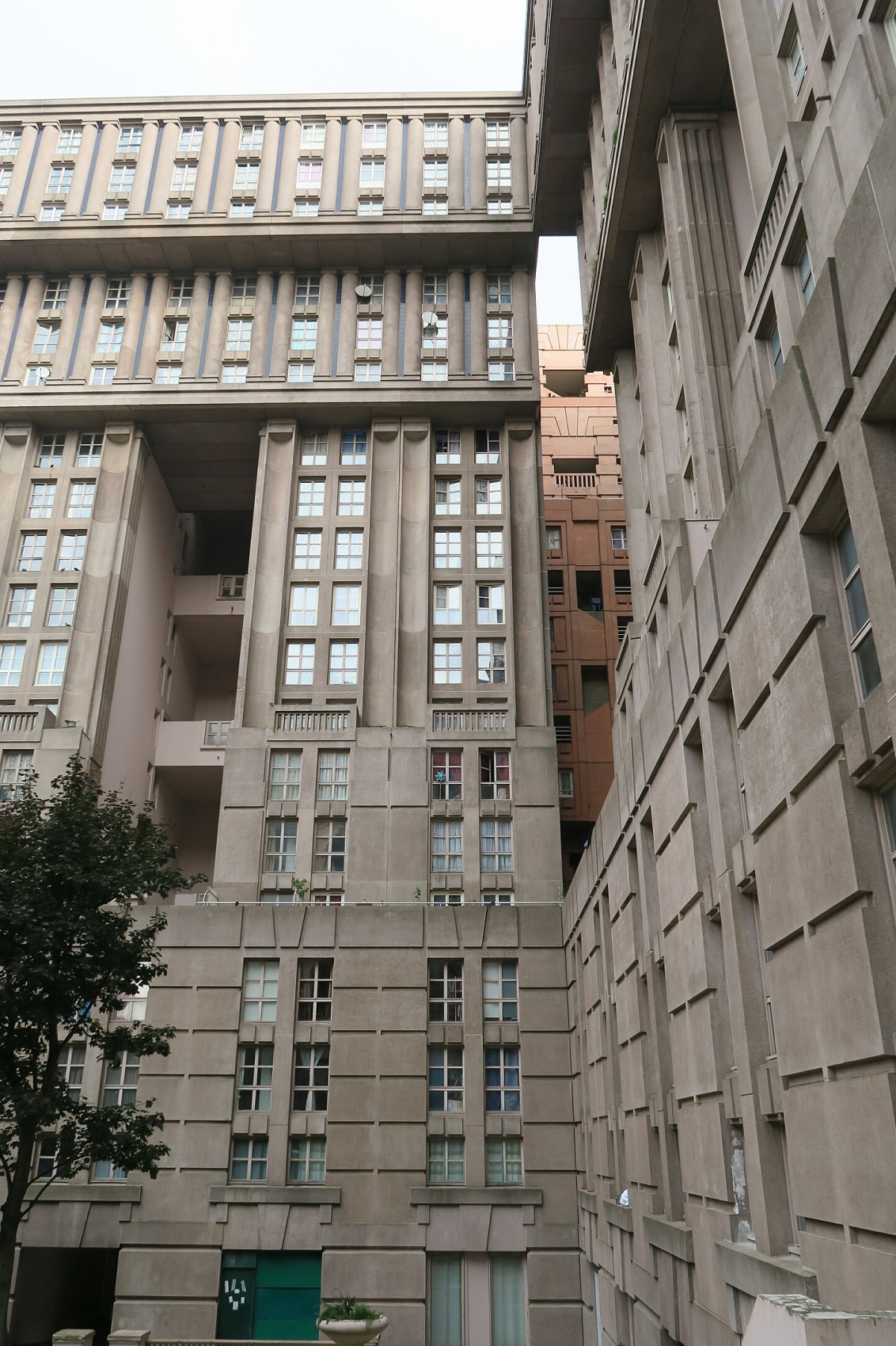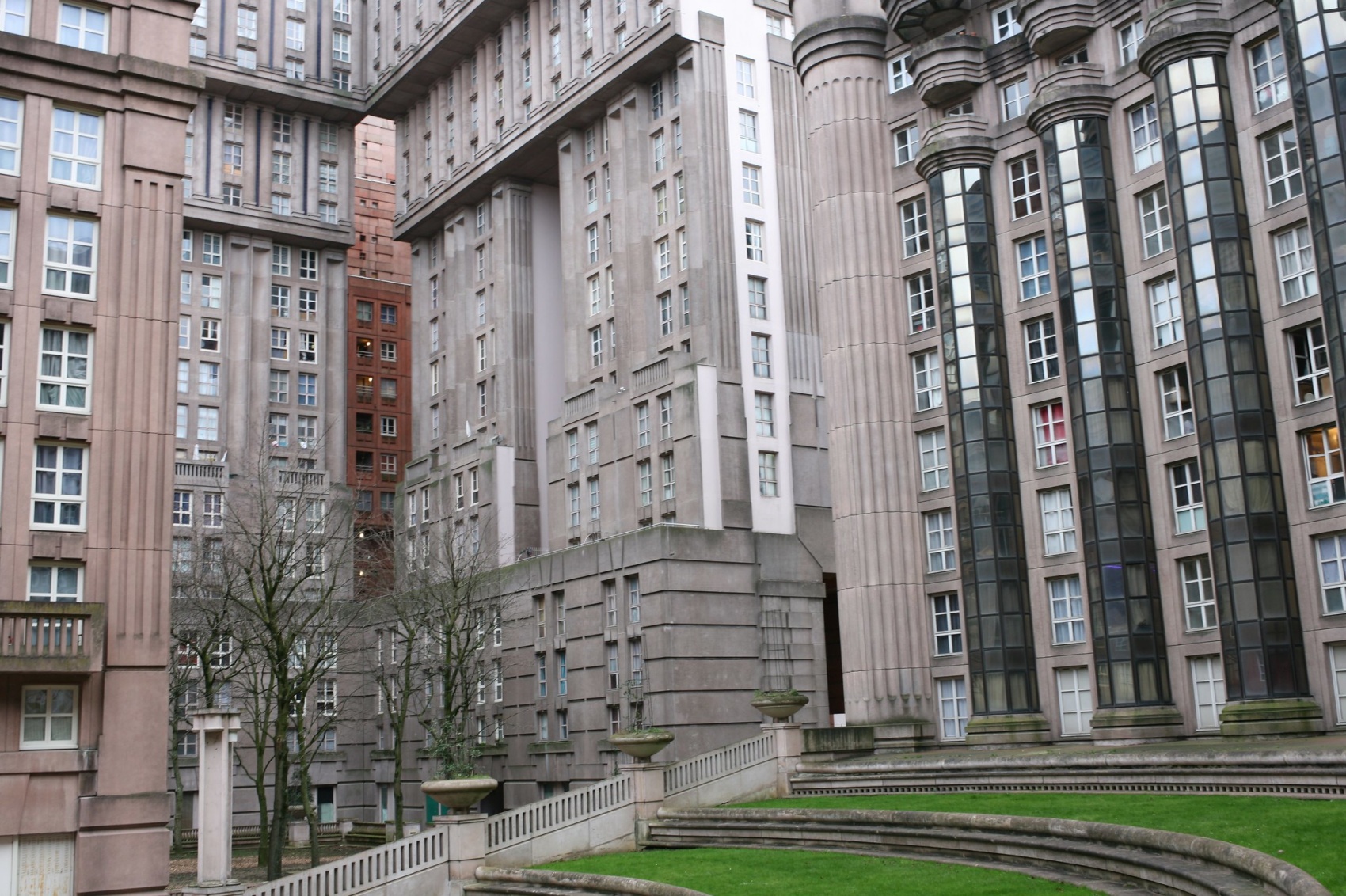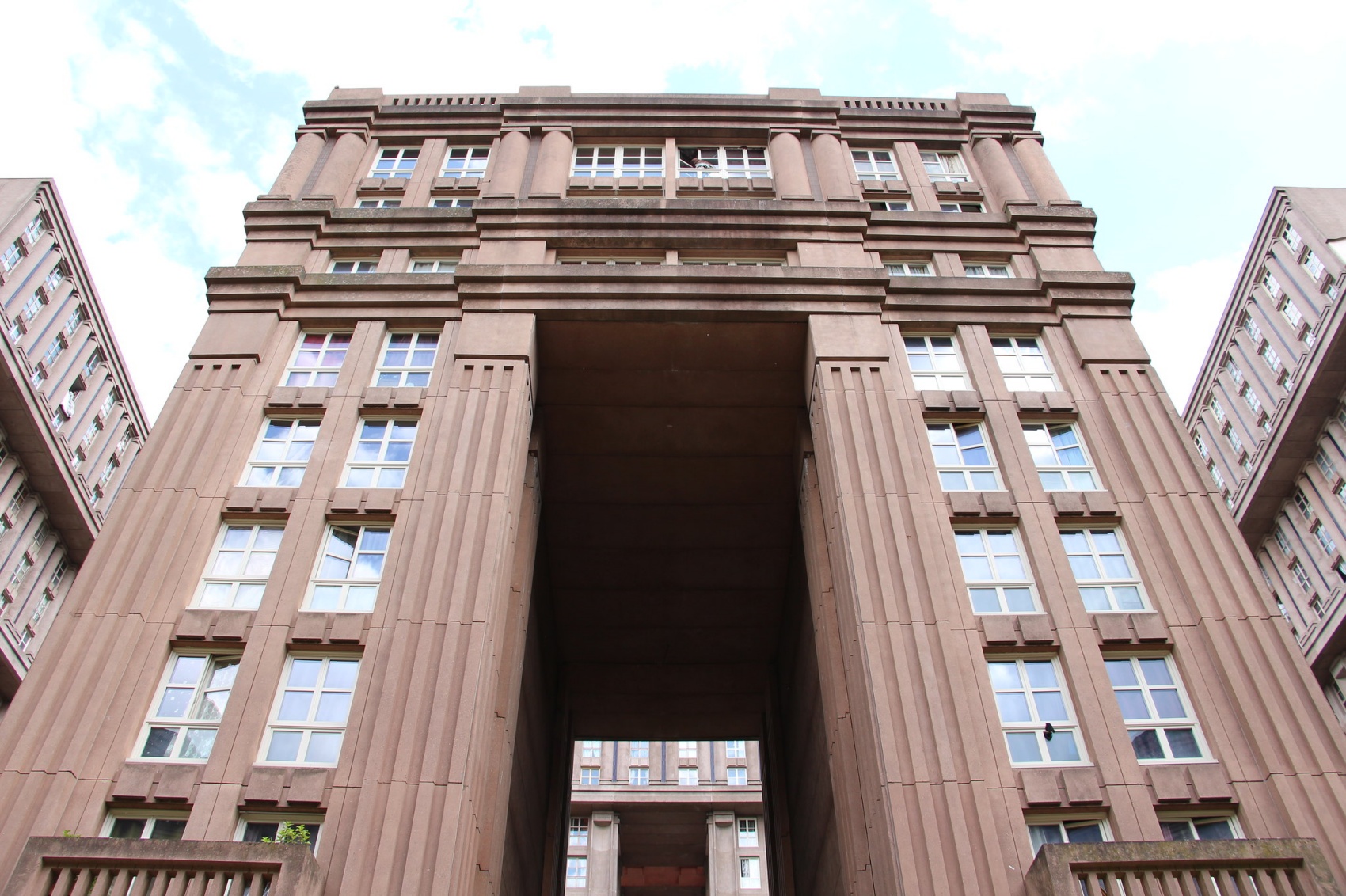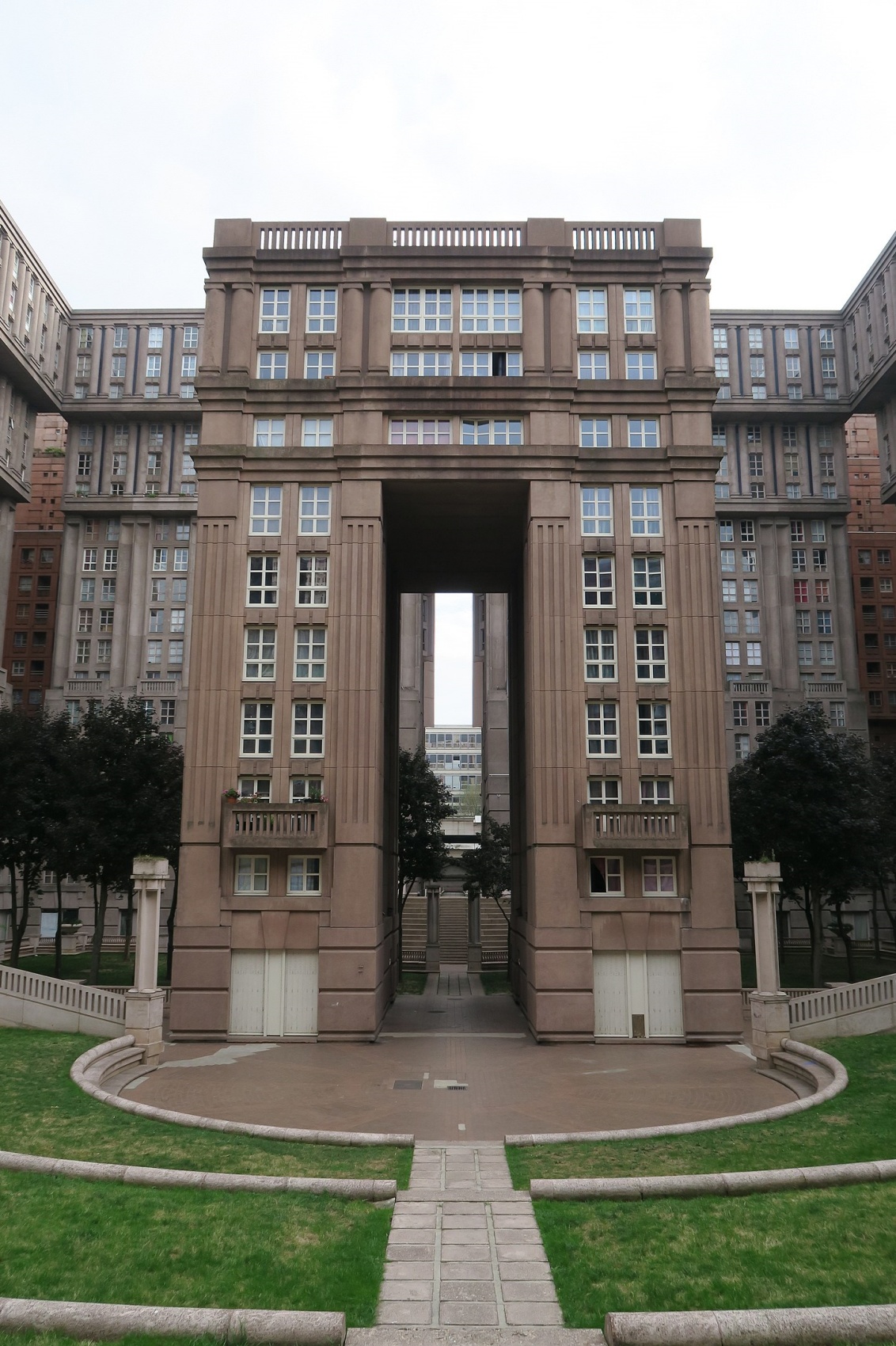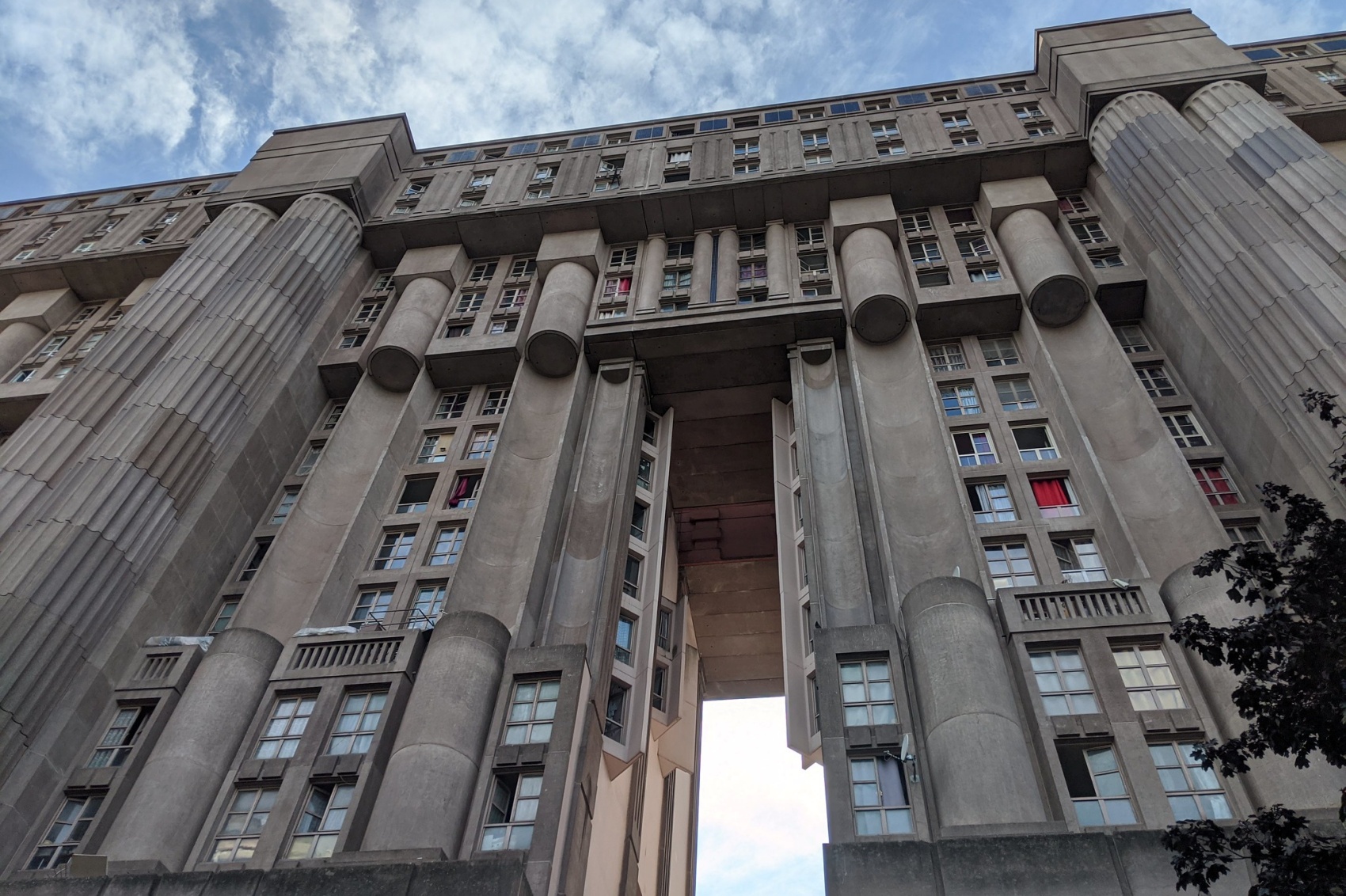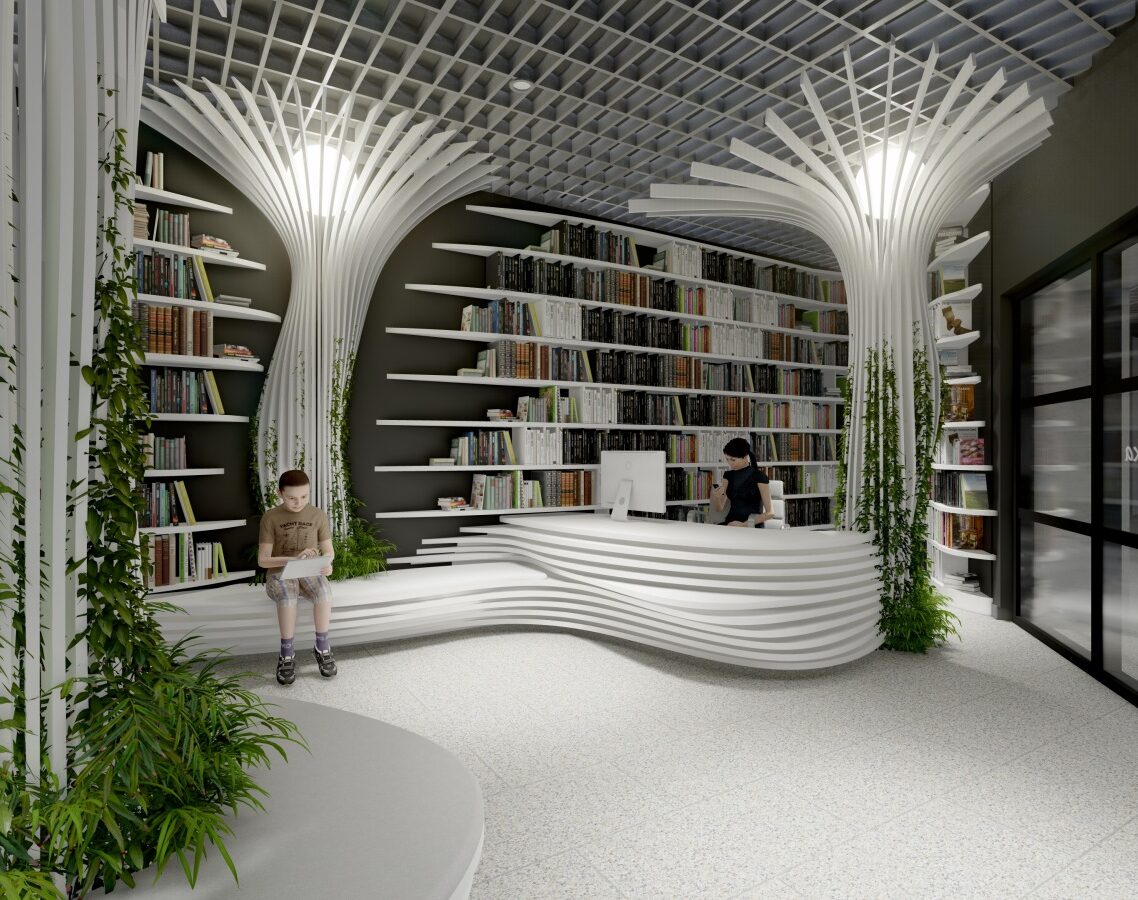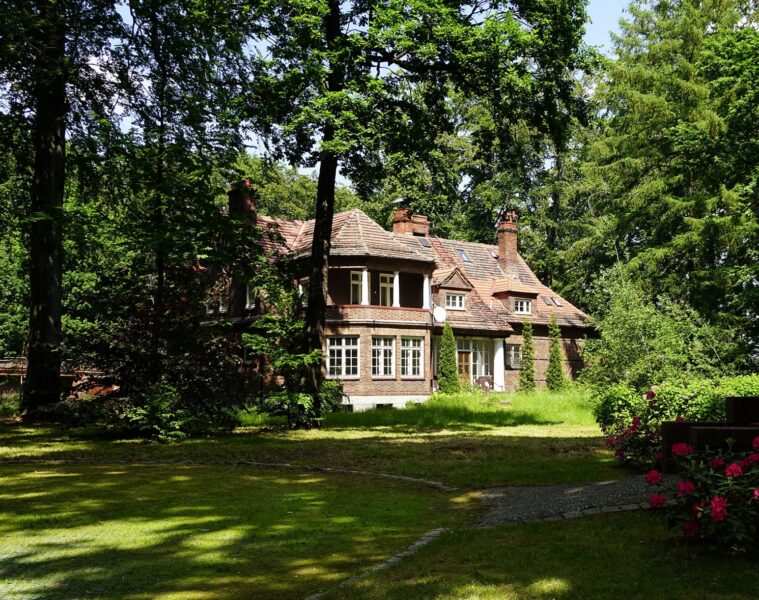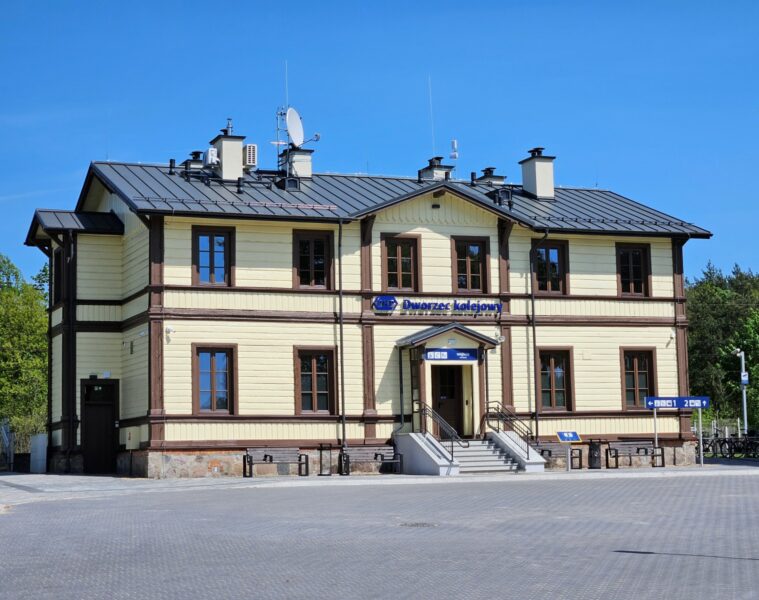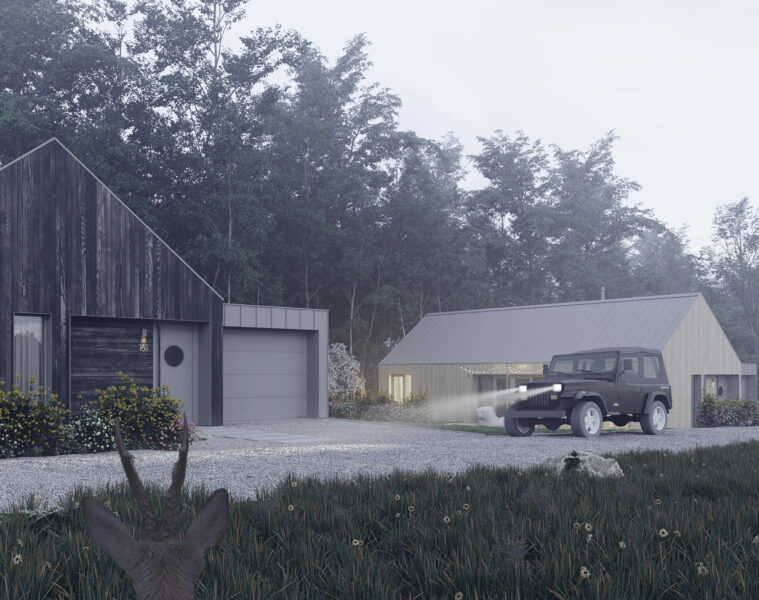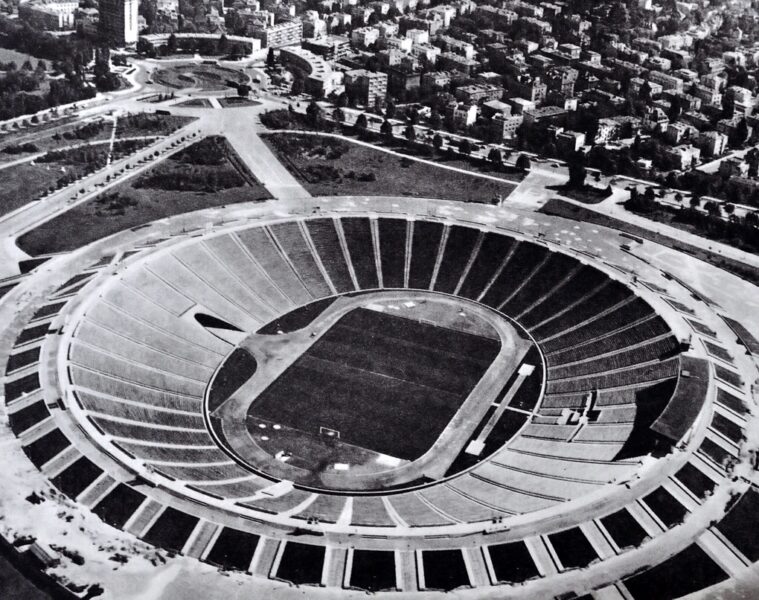A monumental estate for simple people with not-so-simple architecture. It is Les Espaces d’Abraxas (The Spaces of Abraxas) in the suburban Parisian town of Noisy-le-Grand that has amazed with its unusual approach to urban housing since it was built. The Spanish architect wanted ordinary residents not to have to live in grey uninteresting blocks of flats. The idea was light and quite noble, but did it come to fruition?
The post-war population explosion in France meant that Paris began to overcrowd. On top of this, it was a period of increased immigration. The young found it extremely difficult to find a place close to the city where they could start a family. The authorities decided to develop the suburban villages of Paris and create numerous flats in them. In 1978, one such task fell to Ricardo Bofill. In the town of Noisy-le-Grand, characterised by classic low-rise buildings, the ornate but concrete moloch of Abraxas was created.
Greek theatre in three acts
In fact, it is a complex of three buildings. One by one, Le Palacio (the palace), Le Théâtre (the theatre) and the smallest of the three, L’Arc (the arch). The palace is the largest part and has a rather heavy but ornate form, a mixture of brutalism and classical elements. The building, apart from the body, has two wings. The whole extends upwards. Prefabricated concrete elements and cement panels were used in the construction of the palace. The cement comes in different shades, making the façade resemble an antique polychrome.
The theatre is a C-plan building that resembles an ancient amphitheatre in its form and surroundings. From street level, it is just as monumental as the palace standing to the rear. From the courtyard, it is a building with a more modern and lighter appearance than the rest of the complex. It has glazing extending throughout its height, and the green courtyard steps resemble the auditorium of an ancient theatre. The architect admitted in an interview that the ‘theatre’ was intended for the wealthier section of society.
In the middle of the entire complex stands a nine-storey arch. What immediately comes to mind is the triumphal arch, the Roman gate of victory. By force, the arch can also be associated with the Parisian triumphal arch, following the Roman tradition. There are only 20 flats inside. The arch is flush with the entrance gates of the other buildings.
The deity of opposites
The architectural style of the Abraxas complex catches the eye, but also causes consternation. On the one hand, we see caricatured large classical elements, such as the great Greek columns. On the other, flat cylinders that verge on brutalism. The architecture of the complex tries to imitate antiquity, but in a new brutalist way. In some places, one gets the impression that the building’s façade is a simple variation on Kandinsky’s paintings. Dots and dashes decorate the flat walls of the upper section of the palace.
However, not everyone is fond of this unusual design. Critics have often considered Les Espaces d’Abraxas to be a strange attempt to replicate Socialist Realism. It should also be remembered that at the time the complex was built, there were no gigantic residential complexes in Noisy-le-Grand. Instead, one could admire small townhouses and quiet streets. Therefore, the heavy and unconventional architecture of the complex did not fit in with the neighbourhood. The city authorities even wanted to demolish the building in 2006. However, vociferous opposition from the architect and residents buried these plans.

In the Western tradition, Abraxas is a deity that combines opposites. Originally, it is a Persian deity associated with magic and esotericism. The Abraxas buildings are designed in the spirit of the former definition. There are many contradictions here and attempts to combine them. Tying classicism with brutalism, Greek art with Kandinsky, symmetry with disproportion and so on.
An icon of postmodernism
Les Espaces d’Abraxas have served as the backdrop for many films. Admittedly, most of these are French films, so titles such asTrepallium or À mort l’arbitre may say little. However, one recognisable film shot in the courtyard of the complex is Deathly Hallows: Episode 2, where the scene in which the rebels were trapped took place.
The Abraxas building complex is not the only project of its kind in the city. In fact, Noisy-le-Grand is a small mecca for fans of abstract and sometimes even ugly architecture. Another interesting project in the city was looked at by editor Mateusz Markowski in his article on Les Arènes de Picasso, which can be read HERE.
The experiment of building a city with unusual post-modern architecture is not doing very well at the moment. Noisy-le-Grand is slowly turning into a dying town for old people. Paradoxically, this is another aspect that adds to the charm of Les Espaces d’Abraxas. The atmosphere of a complex of opposites is something special.
Source: Medium
Also read: Architecture | Brutalism | Postmodernism | Curiosities | France | Paris | Estate | whiteMAD on Instagram

